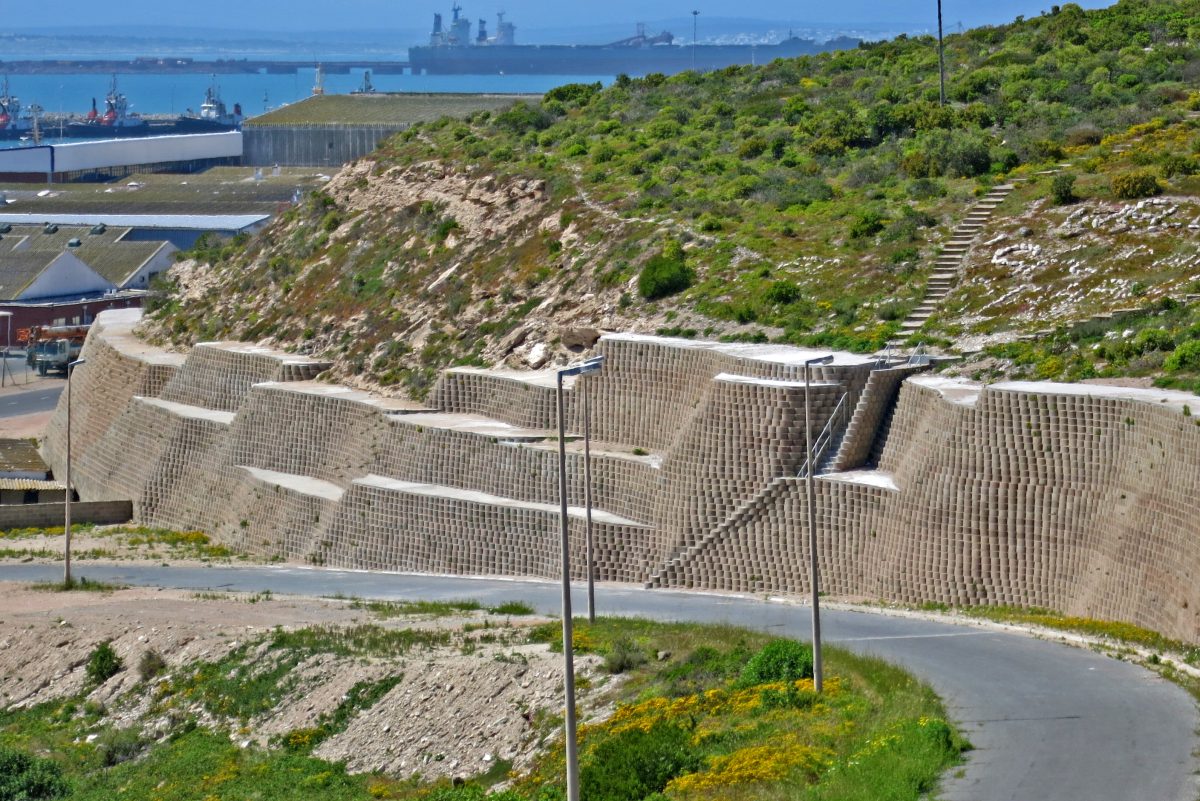

A large-scale erosion-control retaining wall to stabilise the existing eroded embankments in the Pepper Bay harbour area on the West Coast was initiated in the interest of public safety by the Department of Public Works.
The embankments consist of multiple layers of sedimentation reaching up to 21 m high and 2.5 km long, where softer material has eroded leaving harder layers of overhanging and unstable rock. The retaining wall system, supplied by Cape Town-based company Terraforce, was specified by consulting engineering firm Ulwazi Consulting Engineers owing to its practical, stable and weather-resistant surface protection.
Terraforce manufactures interlocking concrete blocks (earth-retaining blocks) for environment friendly landscape retaining walls and erosion control. Terraforce is a member of the Concrete Manufacturers Association.
Before block installation at the bay could begin, all vegetation and loose material had to be removed to expose the underlying rock face of the embankments. “The embankments were then swept clean and benched for slip prevention, so the extent of stabilising could be determined and the angle of the final face slope set out, which is generally between 60˚ and 70˚ to the horizontal,” says contractor Guerrini Marine Construction CEO Adriano Guerrini.
Using soilcrete, a sand-cement mixture used for soil stabilisation, the rock face was covered by backfilling in well-compacted layers, with the depth of the backfilling monitored and minimised to follow the natural contours of the exposed face. At the same time, the block facings were built up and the blocks filled with soil-crete, stepping back towards the rock face where appropriate, to minimise the depth of backfill and reduce the visual impact of a sheer wall. Finally, the tops of the step-backs and the finished level were capped with a concrete slab, he explains.
An estimated 180 000 blocks, with 100 m² backfill sand per 1 200 blocks (100 m²), were supplied by West Coast Terraforce manufacturer Van Dyk Stene. The blocks were installed using five TLB loaders, a 20 000 litre water truck and 80 labourers, 90% of whom were local untrained labourers who underwent onsite training. A further 25 official learners were given basic construction skills training over a period of three months under the auspices of the Expanded Public Works Programme.
Since completion of the project earlier this year, indigenous plants have been planted to re-establish the sensitive vegetation of the West Coast.
More news
- PART 2: CONCRETE IN THE DESIGN OF A UNIQUE LUXURY HOME IN GEORGE, SOUTH AFRICA
- PART 1: CONCRETE IN THE DESIGN OF A UNIQUE LUXURY HOME IN GEORGE, SOUTH AFRICA
- MVULE GARDENS, AFRICA’S LARGEST 3D-PRINTED AFFORDABLE HOUSING PROJECT
- PART 3: HARNESSING THE POTENTIAL OF HIGH SULPHUR FLY ASH IN CONCRETE PRODUCTION
- PART 2: HARNESSING THE POTENTIAL OF HIGH SULPHUR FLY ASH IN CONCRETE PRODUCTION





